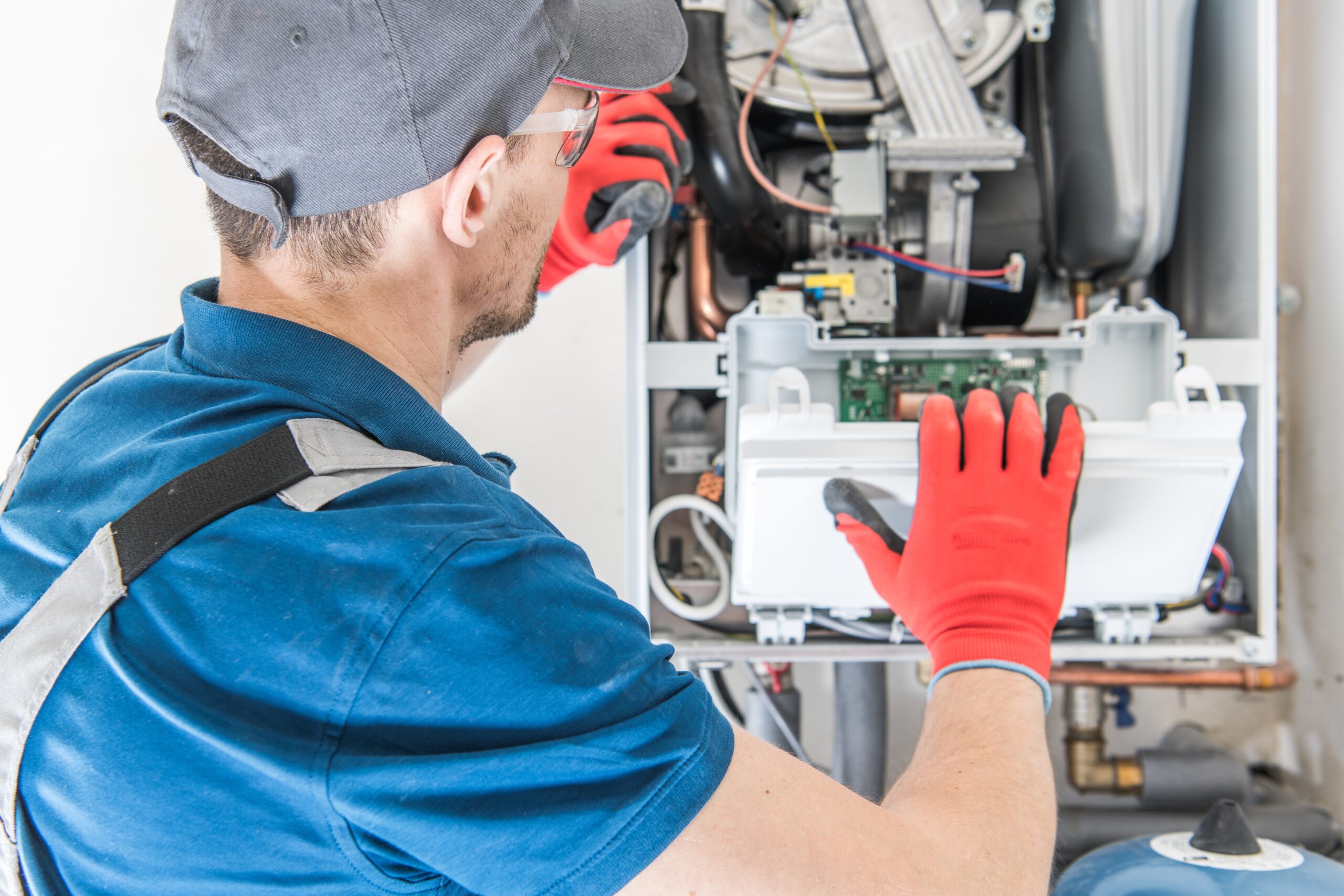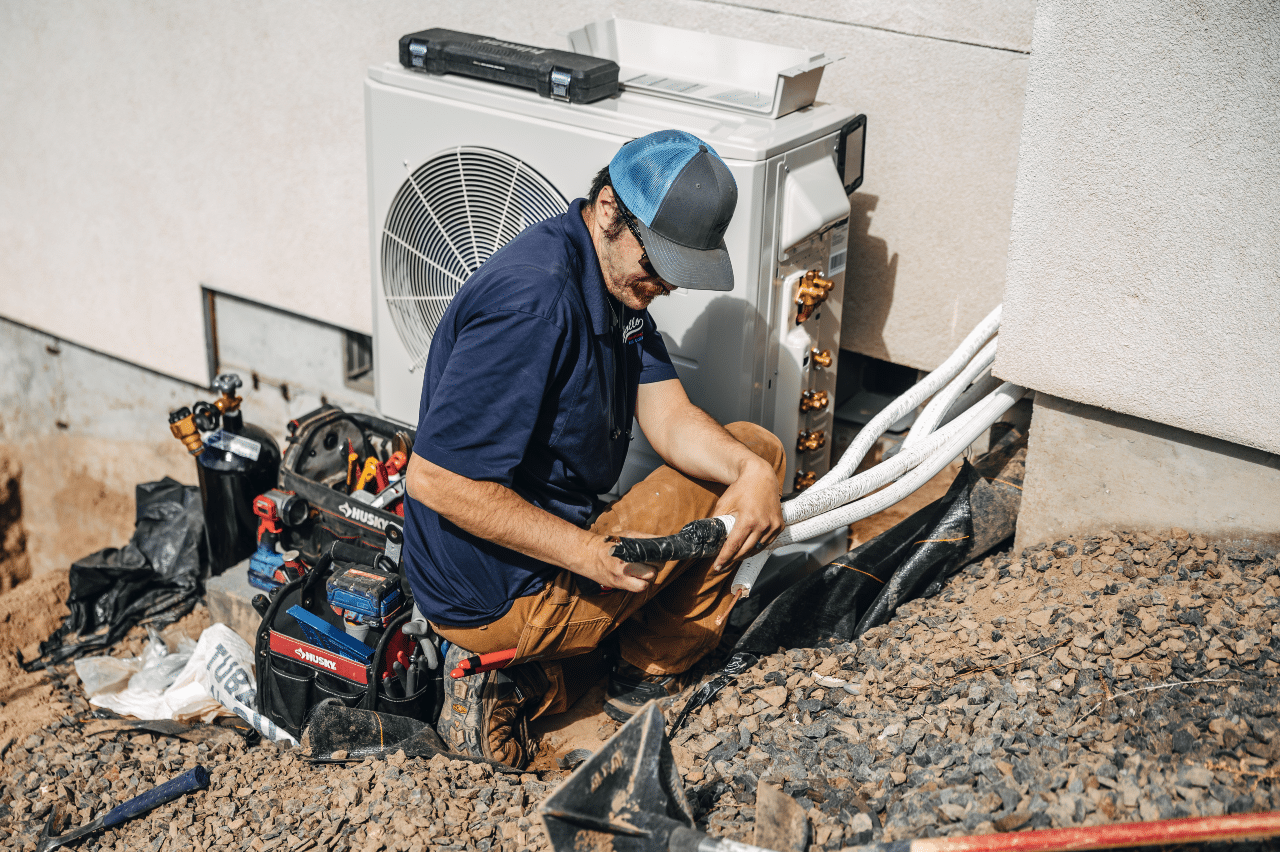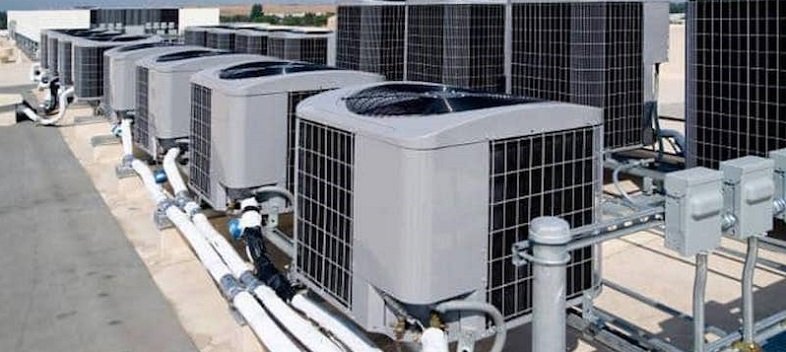The Ultimate Breakdown of ductless mini splits vs Central Heating Systems
The Ultimate Breakdown of ductless mini splits vs Central Heating Systems
Blog Article
Just How a Heatpump and Heater Collaborate to Optimize Your Home's Heating Effectiveness
Comprehending exactly how a heatpump and heating system interact is crucial for home owners seeking reliable home heating options. Each system has its staminas, providing a balanced technique to home comfort. The heatpump masters modest temperature levels, while the furnace provides quick warmth during extreme cold. This synergy not only minimizes power expenses yet additionally boosts the life expectancy of both devices. What factors influence this collaboration, and just how can home owners maximize their benefits?
Comprehending Heat Pumps: Just How They Work
Many individuals might be unfamiliar with their internal functions, heat pumps play a crucial function in contemporary home heating systems. These gadgets operate by moving warmth from one area to an additional, making use of the concepts of thermodynamics. In colder months, a warmth pump removes warmth from the outside air, ground, or water, and transfers it inside your home to heat the home. On the other hand, throughout warmer months, it can turn around the process, acting as an a/c by removing warm from inside to the outside.Heat pumps include an evaporator, compressor, condenser, and development shutoff. The refrigerant within the system absorbs warmth as it evaporates at reduced temperature levels and stress. The compressor then enhances the stress and temperature level of the refrigerant, enabling it to launch warm as it condenses. This reliable process can significantly reduce power usage contrasted to standard heating techniques, making warm pumps a lasting selection for environment control in homes.
The Duty of Furnaces in Home Home Heating
Furnaces play an essential duty in home heating by offering a trusted source of heat during the cooler months. They operate by producing heat via burning or electrical resistance, distributing it throughout the home by means of air ducts or glowing systems. The effectiveness of a furnace is typically measured by its Annual Gas Usage Effectiveness (AFUE) score, which indicates how efficiently the system transforms gas into heat.Furnaces can use various energy sources, consisting of natural gas, oil, gas, or electricity, permitting property owners to choose the most ideal alternative for their requirements. Unlike heatpump, which may struggle in severe cold, heating systems keep regular efficiency, ensuring that indoor temperatures remain comfortable despite outdoor problems. Additionally, modern furnaces frequently come geared up with sophisticated modern technology, such as smart thermostats and variable-speed blowers, enhancing their efficiency and responsiveness. This versatility makes heaters an essential part in all-inclusive home heating approaches.

Advantages of Utilizing Both Systems Together
Incorporating the toughness of both heating systems and heat pumps can bring about an extra efficient and effective home heating service. Making use of both systems allows homeowners to benefit from the heatpump's power efficiency during milder temperature levels while depending on the furnace for even more extreme cold conditions. This double technique can significantly lower power prices, as warm pumps eat less power than traditional home heating methods when temperature levels are moderate.Additionally, using both systems together can boost convenience degrees in the home. Heatpump can offer regular, even home heating, while furnaces can quickly raise ambient temperatures when required. Moreover, the integration of both systems can expand the lifespan of devices by reducing wear and tear on each unit, as they share the work. Inevitably, property owners can take pleasure in a well balanced, affordable home heating service that adjusts flawlessly to differing climate problems, making sure a cozy and inviting home throughout the winter season months.
How Warm Pumps and Furnaces Enhance Each Various Other
When house owners incorporate heatpump and heating systems, they produce a corresponding heating unit that makes the most of efficiency and comfort. Warmth pumps operate by transferring heat from the outside air or ground, making them very efficient in modest climates. They excel throughout milder temperatures, giving economical home heating. On the other hand, heating systems produce warm through burning or electric resistance, delivering solid, prompt warmth during severe cool conditions.The mix of these two systems enables for dynamic adjustments based on temperature changes. Throughout warmer months or milder winter days, the heat pump can take the lead, preserving energy and decreasing prices. As temperatures decrease, the heating system can perfectly involve, guaranteeing regular warmth throughout the home. This harmony not just enhances energy usage however additionally improves the life expectancy of both systems, as each device operates within its optimal efficiency array. Together, they develop a well balanced atmosphere that adapts to varying environment needs.
Optimizing Efficiency: Tips for Homeowners
Home owners can enhance their heating performance with several functional methods. Developing a routine upkeep timetable, integrating wise thermostat technology, and carrying out efficient insulation and securing options are key actions. These steps not just boost comfort but also reduce energy costs.
Regular Maintenance Schedule
To assure maximum heating effectiveness, developing a normal maintenance routine is essential for any kind of home. Property owners must focus on routine examinations of both heatpump and heaters to determine peak efficiency. This includes changing air filters every one to 3 months, as stopped up filters can greatly minimize efficiency. Furthermore, scheduling specialist upkeep at the very least yearly enables service technicians to recognize and resolve possible concerns before they intensify. Property owners ought to also clean the heatpump's outdoor unit to stop debris buildup that can prevent airflow. By adhering to a regular upkeep routine, property owners not just boost their heating unit' efficiency yet likewise expand their lifespan, resulting in better convenience and reduced energy costs throughout the cooler months.
Smart Thermostat Integration
Integrating a wise thermostat right into a home heating unit can greatly improve power performance, specifically as it allows for specific control over temperature setups. These tools can discover the house owner's routine and choices, automatically changing the temperature level to maximize comfort while decreasing power usage. They can lower home heating throughout times when the home is vacant, reducing unnecessary usage. Lots of smart thermostats additionally provide real-time energy use data, enabling homeowners to make informed choices about their heating habits. Furthermore, remote accessibility using smart device applications allows individuals to change setups from anywhere, making sure the home is warm upon return. In general, smart thermostat assimilation not just improves comfort however substantially adds to power helpful resources savings and performance.
Insulation and Securing Solutions
Smart thermostats play a critical role in power performance, however their efficiency can be significantly boosted by correct insulation and securing services. House owners should prioritize insulating floorings, attic rooms, and walls to decrease heat loss. Top quality insulation products, such as spray foam or fiberglass, can substantially enhance thermal resistance. Additionally, sealing gaps around air ducts, home windows, and doors protects against cold air infiltration and heat getaway. Weatherstripping and caulking work techniques for addressing these leakages - furnace replacement. Routine examinations official site for air leakages, in addition to the usage of blower door tests, can aid determine problem areas. By purchasing insulation and securing, home owners can optimize the efficiency of their heater, ultimately resulting in minimized power usage and lower utility costs
Typical Misconceptions Regarding Warmth Pumps and Furnaces
What misconceptions surround heatpump and heating systems? Numerous people wrongly think that heatpump are inefficient in cooler climates. Actually, modern-day warmth pumps are created to operate efficiently even in low temperature levels, giving trusted home heating throughout winter. One more usual myth is that heating systems are constantly much more effective than heatpump. Nevertheless, this relies on the certain power resources and effectiveness scores of the devices in question. Some may also believe that making use of both systems at the same time is unnecessary, however in fact, this mix can optimize home heating performance, particularly during extreme climate condition. Additionally, people frequently assume that heatpump require constant maintenance, when in reality, they have comparable upkeep requires to conventional heater. By debunking these misconceptions, homeowners can make more educated decisions regarding their home heating choices, inevitably leading to improved comfort and energy effectiveness in their homes.
Upkeep Factors To Consider for Combined Solutions

Regularly Asked Inquiries
Can Heat Pumps Work Efficiently in Extremely Cold Climates?
Heat pumps can struggle in incredibly cool climates because of decreased effectiveness and heat removal constraints. Improvements in modern technology have led to versions developed for better efficiency in such conditions, boosting their feasibility in rough environments.
For How Long Do Heat Pumps and Furnaces Generally Last?
Warm pumps normally last 15 to twenty years, while heaters have a life expectancy of 15 to thirty years. Normal maintenance can prolong their longevity, making certain efficient operation and reducing the demand for premature substitutes.

What Is the Average Cost of Putting Up Both Equipments?
The ordinary price of mounting both a heatpump and a heating system generally varies in between $5,000 to $10,000 - furnace replacement. Factors influencing this cost include system dimension, installment intricacy, and regional labor rates
Are There Tax Obligation Motivations for Utilizing Energy-Efficient Home Heating Systems?
Many home owners ask about tax incentives for energy-efficient heater. Different federal and state programs usually provide credit scores or refunds, urging the adoption of sustainable modern technologies to decrease power usage and advertise environmental duty.
Just how Do I Choose the Right Size Heatpump and Heating System?
Picking the ideal dimension warmth pump and furnace involves determining the home's square video, taking into consideration insulation top quality, and examining neighborhood climate. Consulting a specialist can ensure optimal system efficiency click for more and power efficiency based on particular needs. heat pump replacement ooltewah tn. Understanding how a warm pump and furnace work with each other is crucial for home owners looking for reliable heating services. In chillier months, a warmth pump removes warmth from the outside air, ground, or water, and transfers it inside your home to heat the living space. When property owners incorporate warmth pumps and heating systems, they develop a complementary home heating system that maximizes performance and convenience. Warmth pumps run by moving heat from the outside air or ground, making them highly reliable in modest climates. Heat pumps can struggle in very cool environments due to decreased performance and warmth extraction restrictions
Report this page